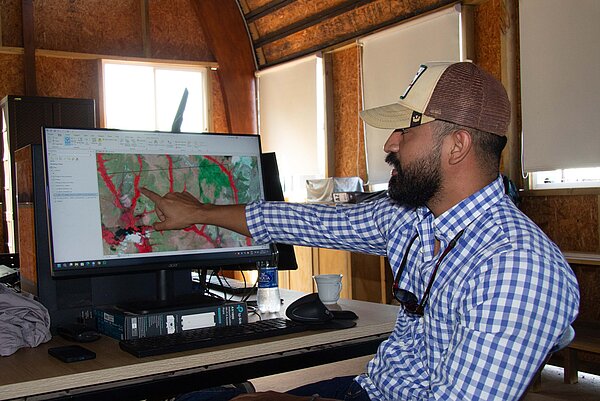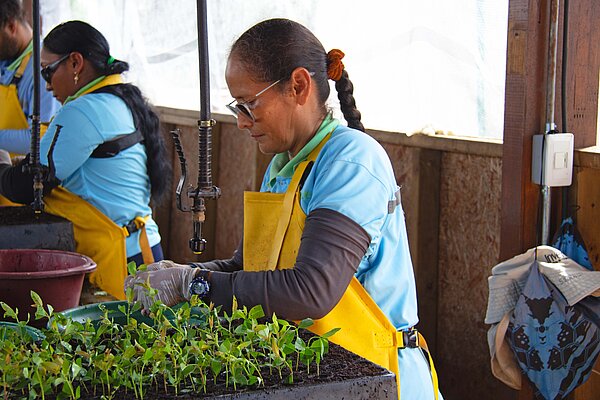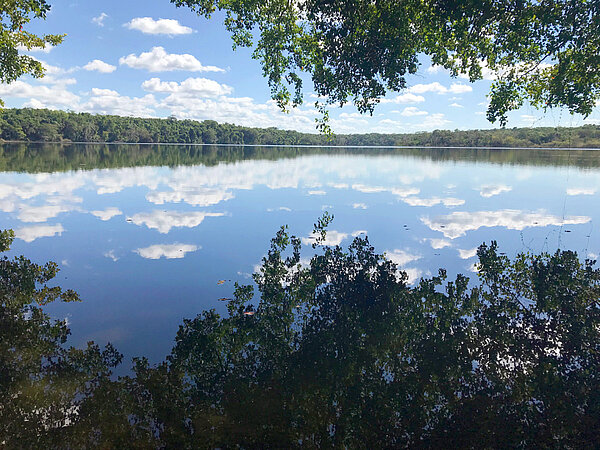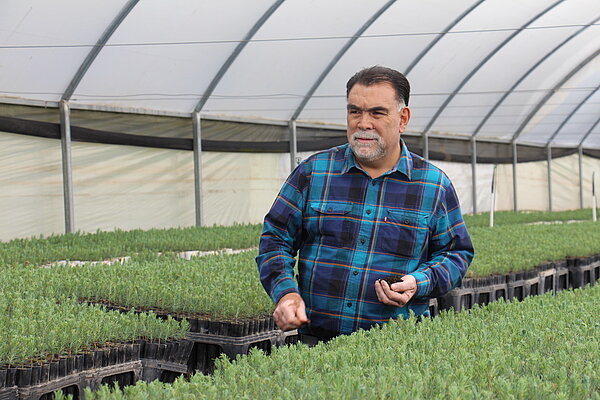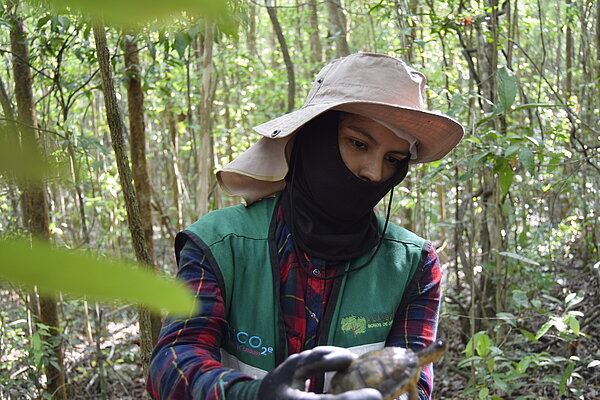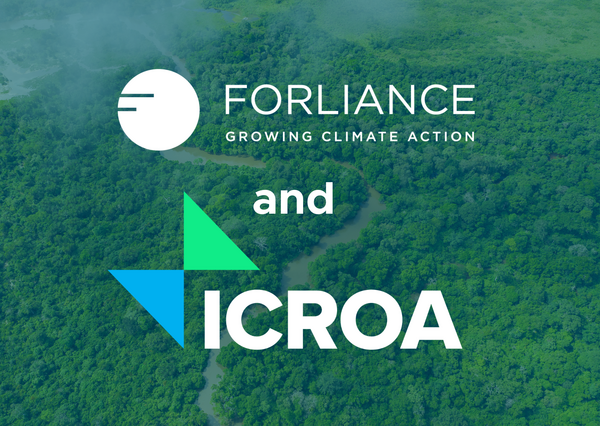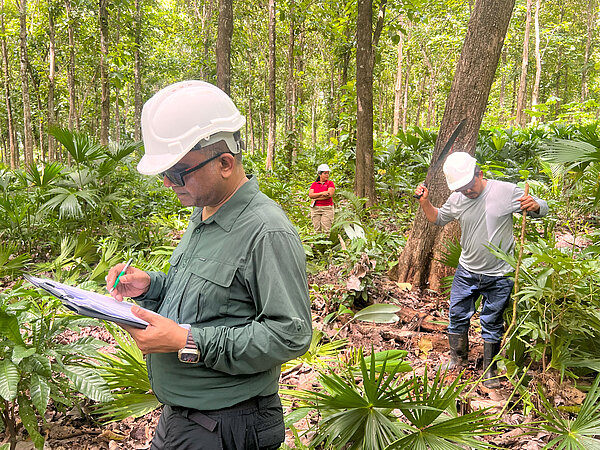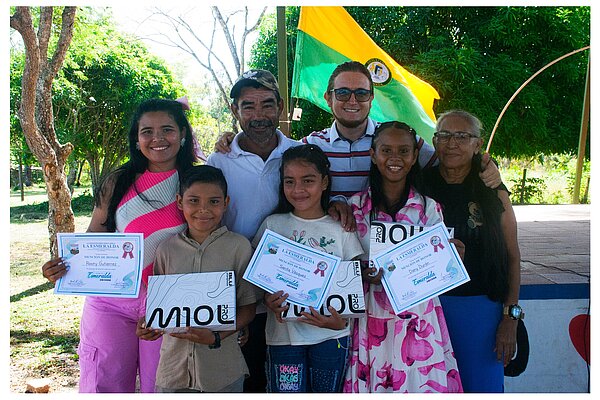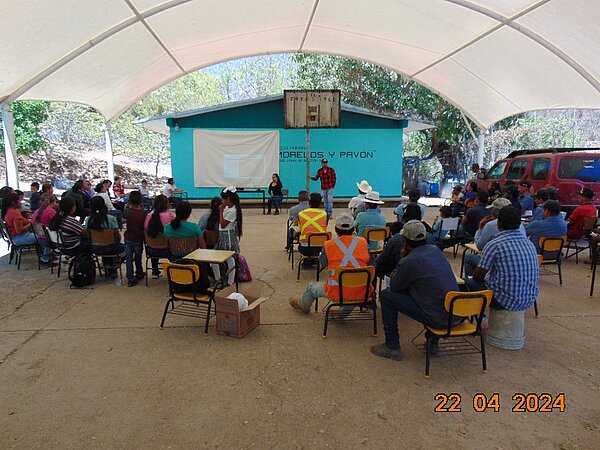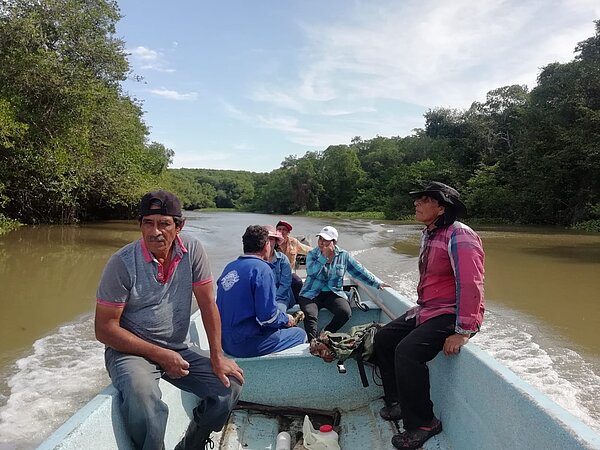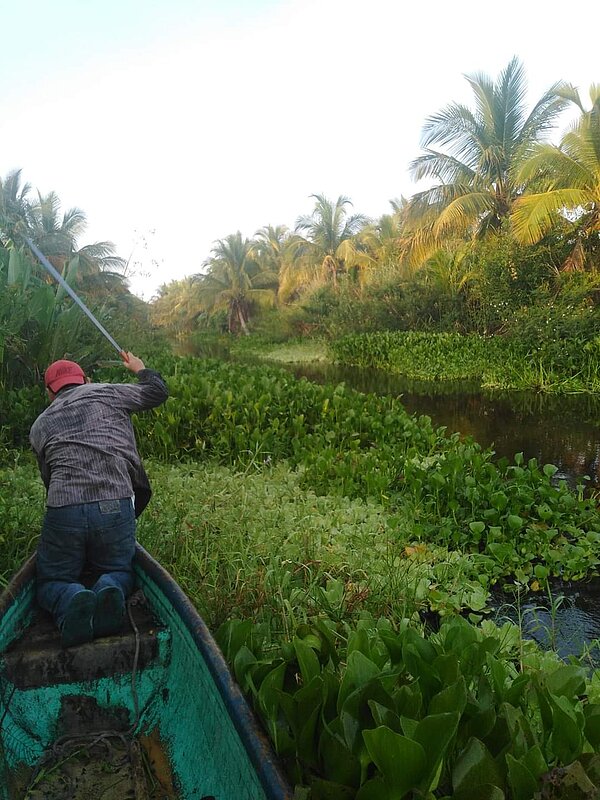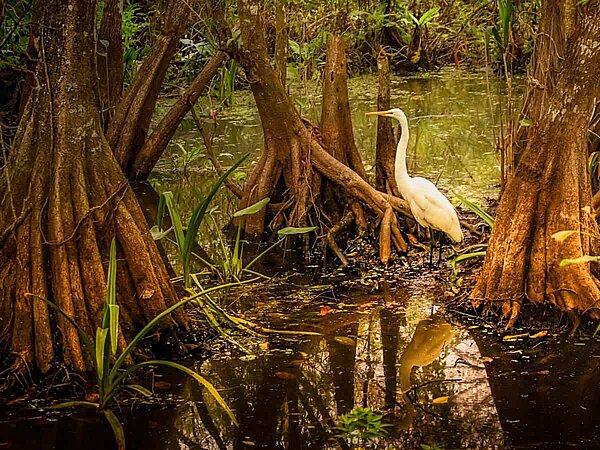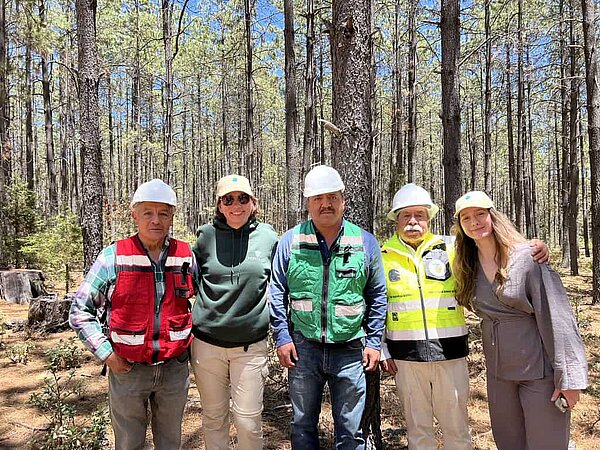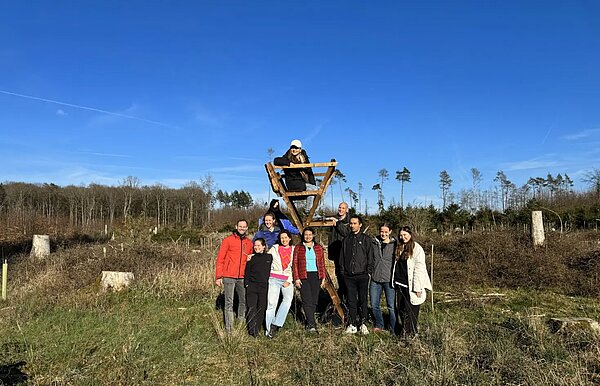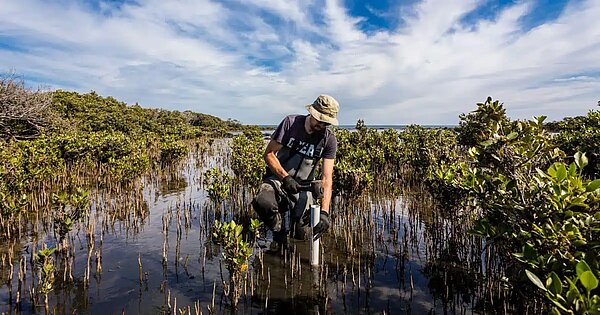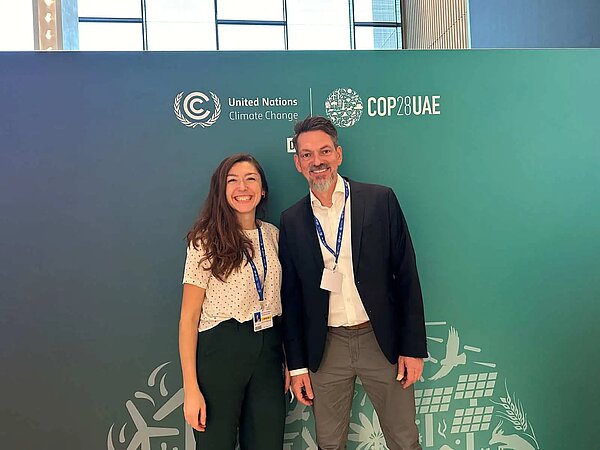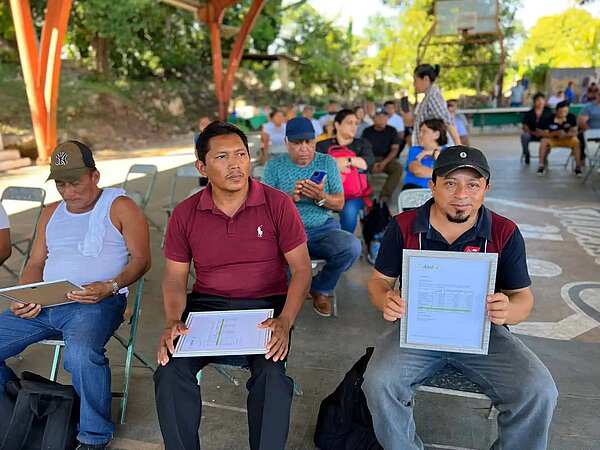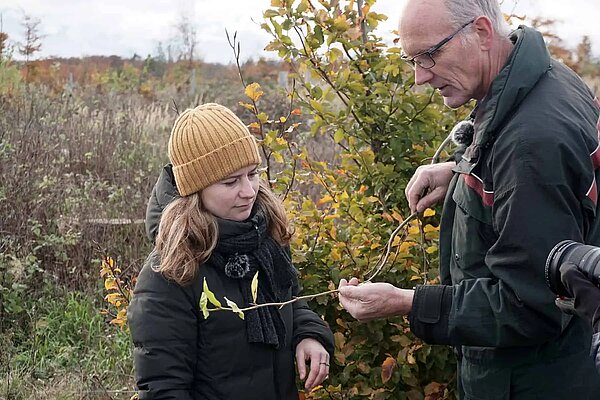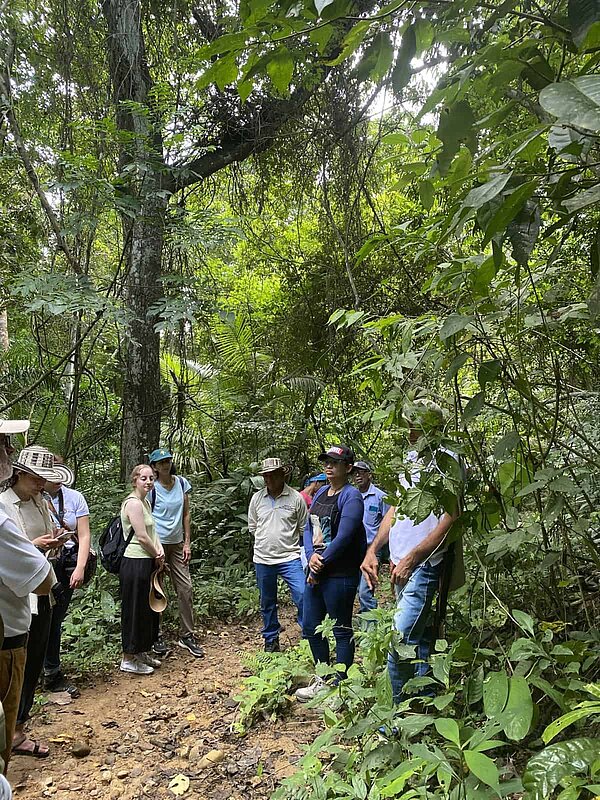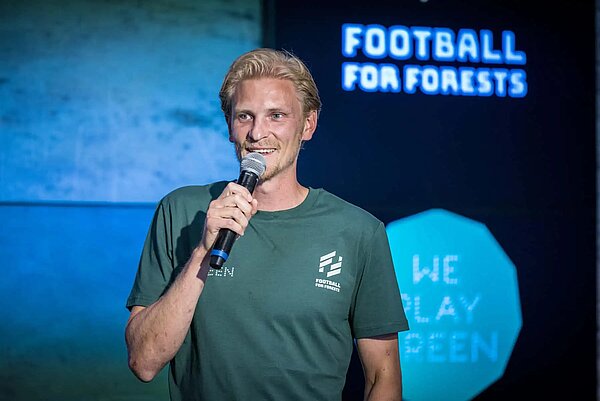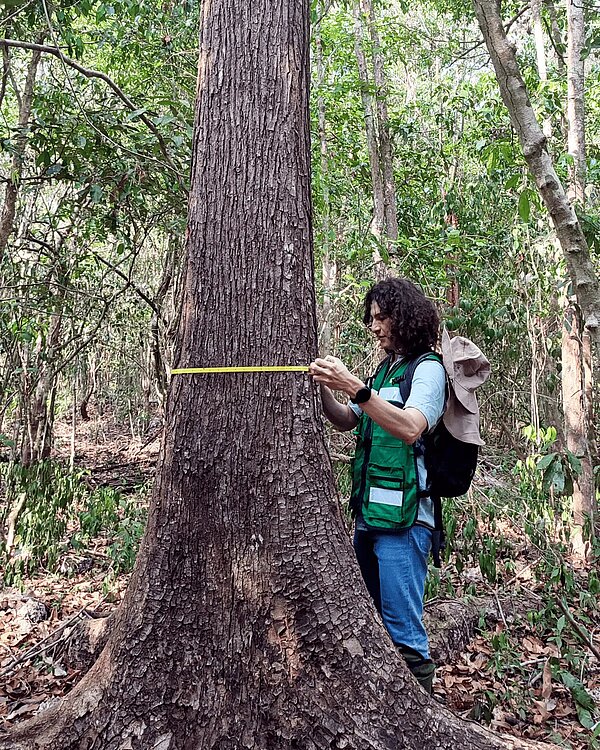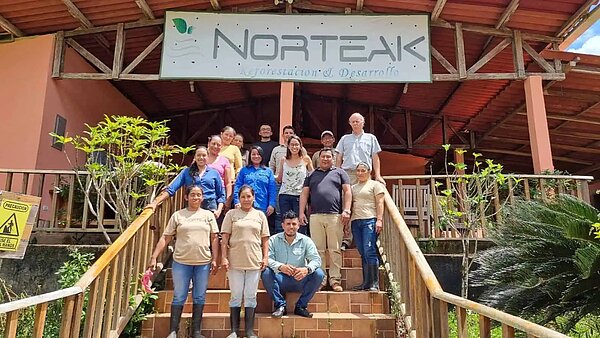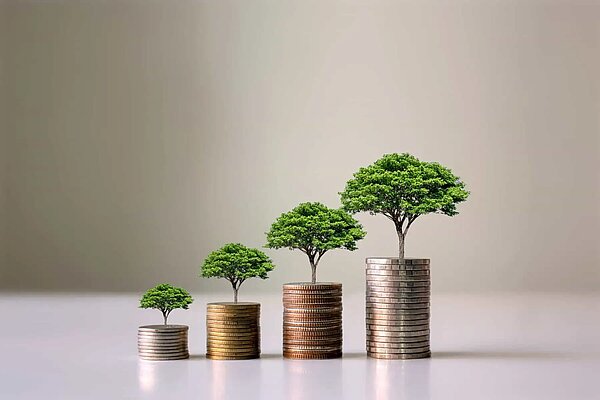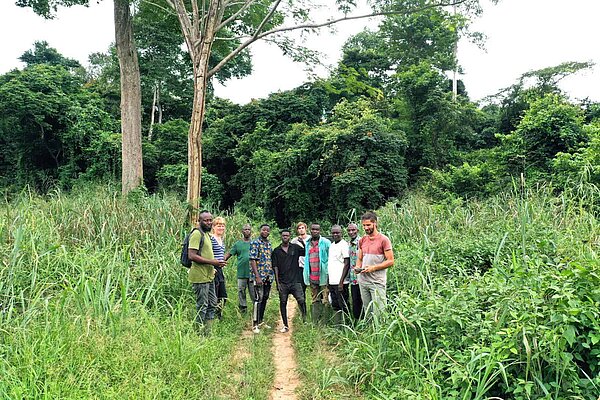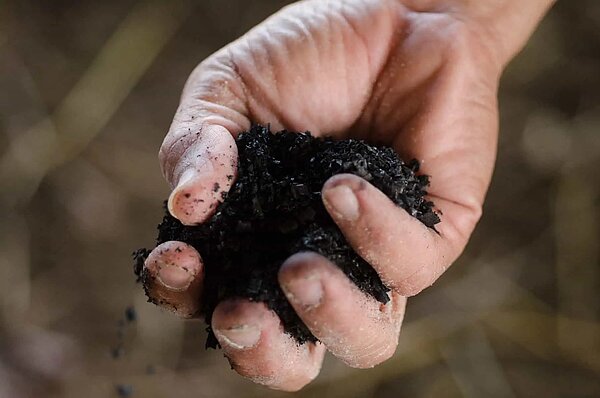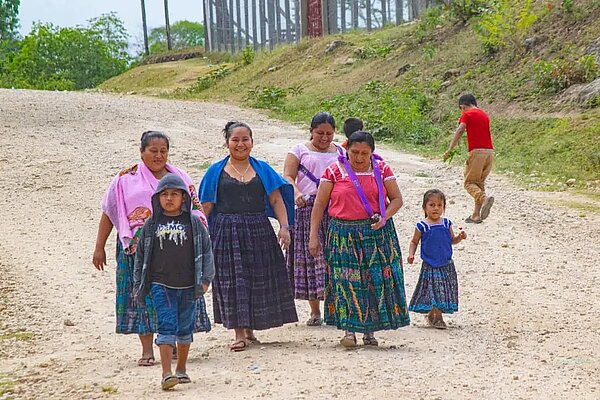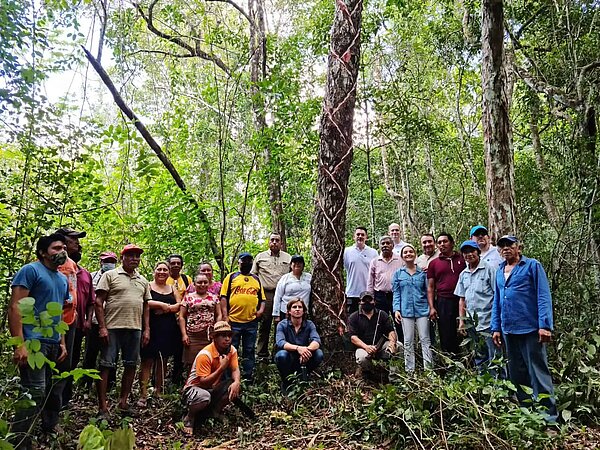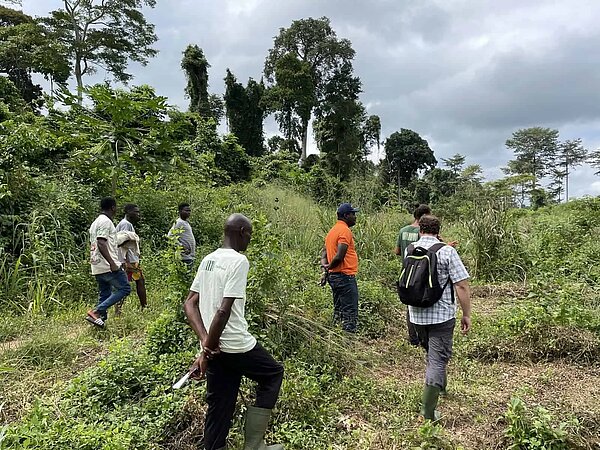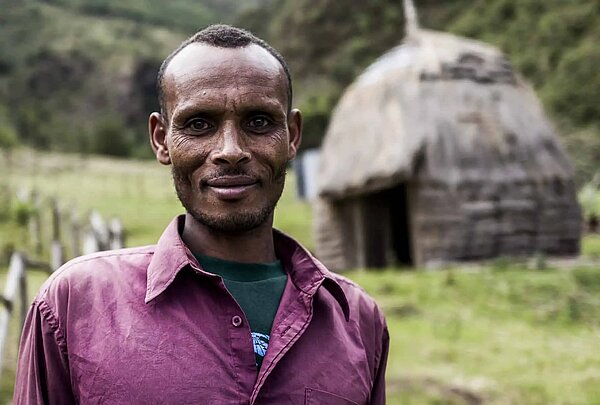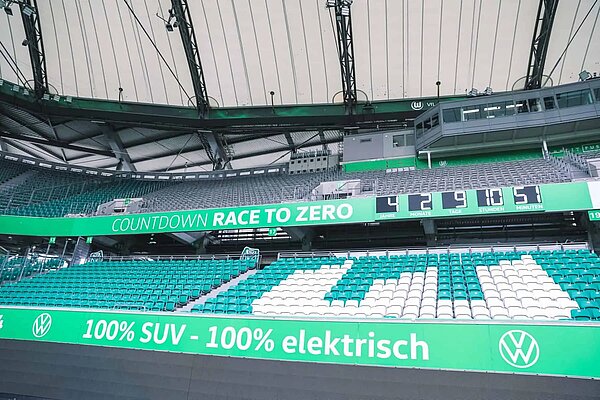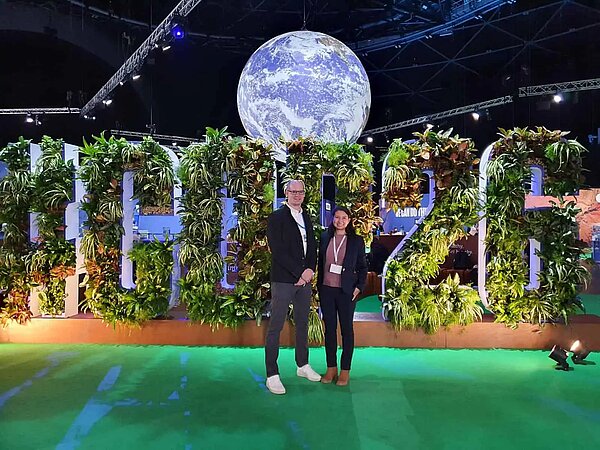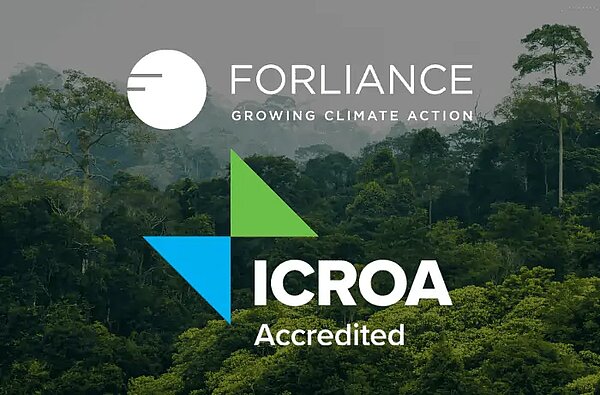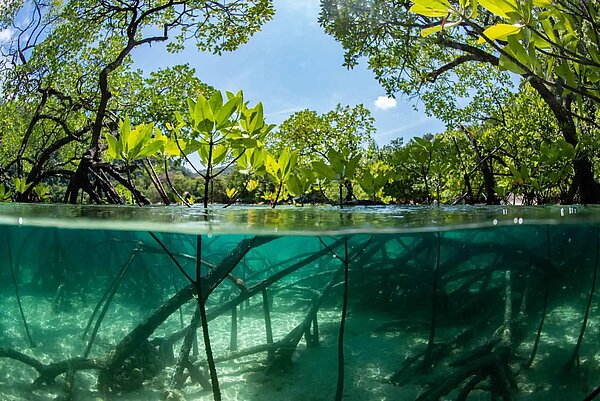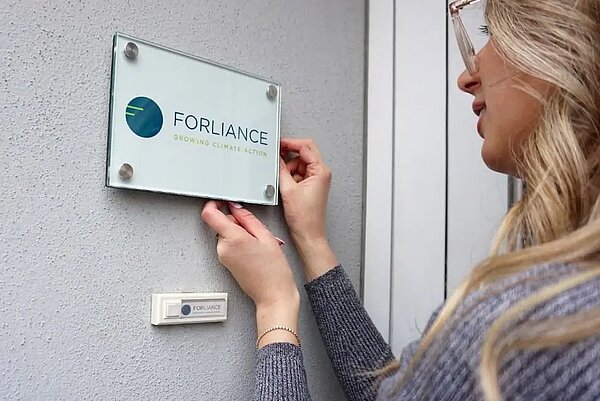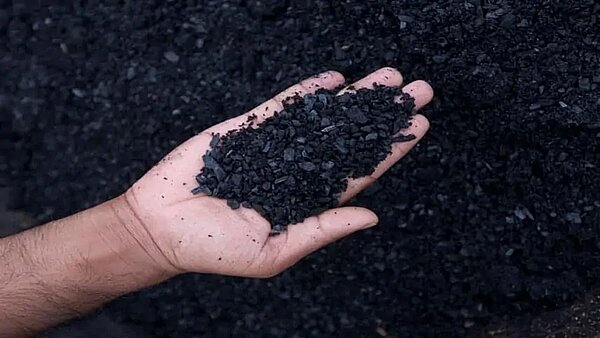Haciendo que el fútbol sea neutro en carbono – VfL Wolfsburg comparte el viaje climático del club de fútbol
December 13, 2021
Alianzas
Los informes climáticos recientes muestran que necesitamos aumentar urgentemente nuestros esfuerzos para mitigar el cambio climático. Ya estamos viendo las consecuencias del cambio climático en todas partes, y experimentaremos cambios adicionales y simultáneos que aumentan con cada grado más de calentamiento. La protección del clima es responsabilidad de todos, y todos los sectores deben tomar medidas concretas al respecto.
El sector deportivo ya no puede evitar el tema del clima. En un partido de fútbol, las emisiones de CO2 por cada espectador ascienden a un promedio de 11 kilogramos. Aunque los clubes están abordando cada vez más el tema de la protección del clima, todavía faltan objetivos concretos y vinculantes.
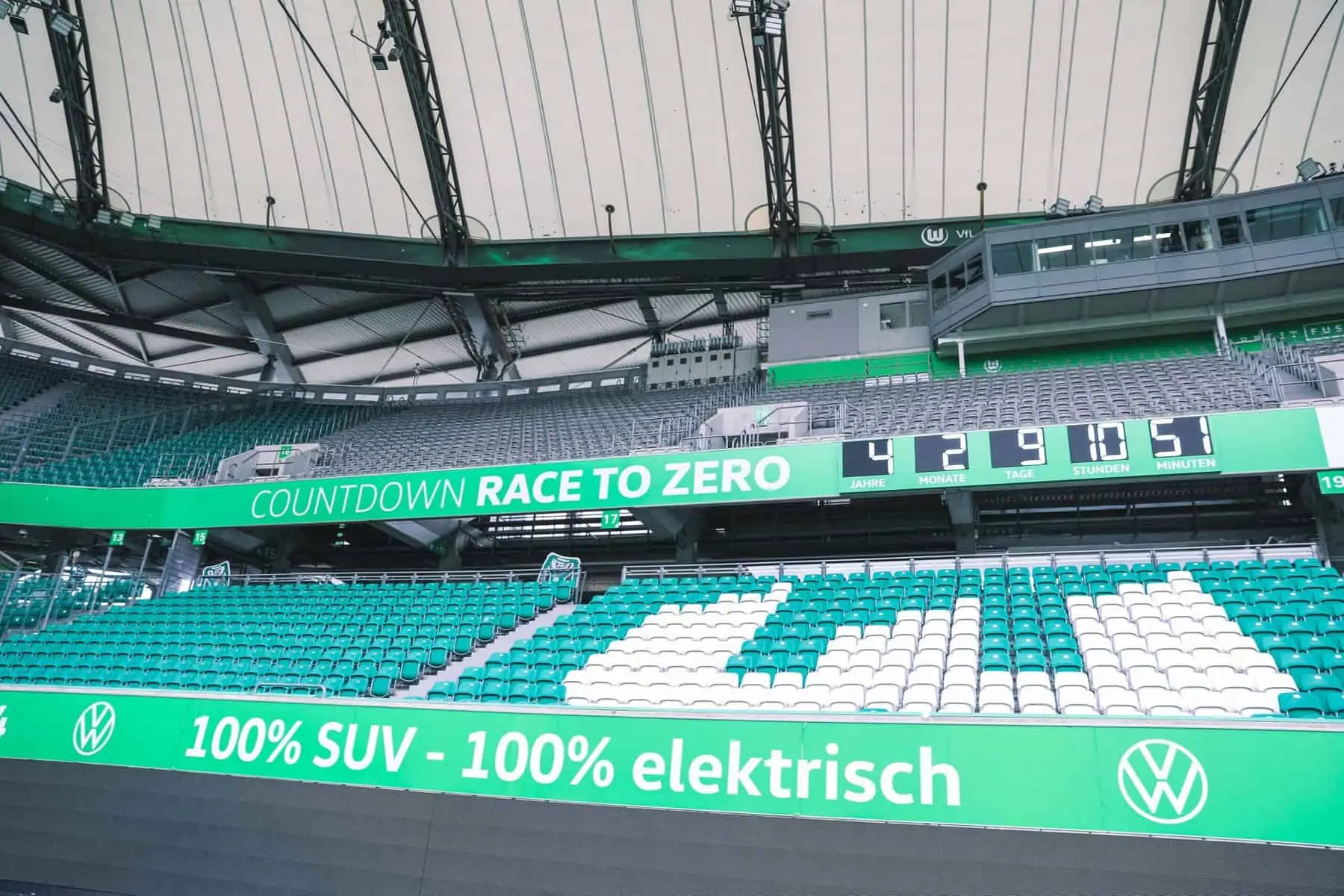
VfL Wolfsburg es uno de los primeros clubes de fútbol profesional en Europa en comprometerse públicamente a reducir sistemáticamente sus emisiones de carbono. Esto convierte a "Los Lobos" en pioneros en el ámbito de la protección climática en el fútbol profesional. Nosotros en FORLIANCE calculamos y analizamos la huella de carbono de VfL Wolfsburg. Con base en esto, desarrollamos los objetivos de reducción de emisiones del club basados en la ciencia.
Le preguntamos a Anja Melo, gerente de RSE y clima de VfL Wolfsburg, sobre las

FORLIANCE: ¿Por qué decidió VfL Wolfsburg medir su huella de carbono?
Anja Melo (gerente de RSE y clima de VfL Wolfsburg): “Fuimos el primer club de la Bundesliga en evaluar y analizar sus emisiones de CO2 en 2011. En ese momento, el compromiso ambiental era uno de nuestros objetivos de responsabilidad corporativa. Pero nuestro enfoque aún no era estratégico. El propósito de desarrollar una huella de carbono era principalmente obtener una visión general de nuestras emisiones y una comprensión clara de nuestros puntos críticos de emisión. Los principales motivos de nuestra decisión para medir la huella de carbono del club de fútbol fueron reducir nuestro impacto ambiental y climático, así como reducir costos.
Con FORLIANCE encontramos un gran socio para asesorarnos en temas de clima y sostenibilidad. Valoramos mucho el intercambio cercano y el análisis concreto y transparente.”
La mitigación del cambio climático sigue siendo un tema importante en el deporte. Especialmente el fútbol profesional tiene una huella de carbono significativa. ¿Qué medidas concretas de reducción toma VfL Wolfsburg para reducir el impacto climático?
“Los mega eventos, como los partidos de fútbol, tienen un alto impacto ambiental. Para reducir este impacto, en VfL Wolfsburg decidimos medir nuestra huella de carbono regularmente. Poco después de medir nuestra huella de carbono en 2011, el club cambió completamente a energía verde. También empleamos métodos de construcción energéticamente eficientes para los nuevos edificios y extendimos la cuota de vehículos eléctricos en nuestra flota al comienzo de nuestro compromiso. Siempre hemos tenido pequeñas campañas con las que hemos promovido el comportamiento consciente del clima, como, por ejemplo, nuestro día de la campaña en bicicleta. Llamamos a los espectadores a venir en bicicleta al día del partido. Hasta ahora, hemos tenido el mayor impacto de reducción al cambiar a electricidad verde. Ahora estamos trabajando en nuestras medidas de una manera más estratégica."
¿Cómo se ven sus objetivos de protección climática a largo plazo?
“Desde 2019, estamos involucrados en la iniciativa Sports for Climate Action de la UNFCCC. Poco después, nos convertimos en el primer club de fútbol profesional de las principales ligas europeas en apoyar oficialmente la campaña Race to Zero de la ONU, estableciéndonos la meta de ser neto-cero para 2025 con una reducción anual del 6,45%. Para 2030, esto resultará en una reducción del 55% en comparación con el año de referencia 2017/2018. El camino de reducción sigue la metodología de la Science Based Targets Initiative y cubre los tres alcances del Protocolo de Gases de Efecto Invernadero (GHG) y no incluye compensaciones.”
¿Qué medidas de reducción de emisiones fueron rápidas y fáciles de implementar?
“Cambiar a electricidad verde fue una forma impactante y bastante sencilla de reducir nuestras emisiones. Al mismo tiempo, queremos promover activamente la electricidad verde. Un paso importante para nosotros en esta dirección es la implementación de un sistema fotovoltaico, que está previsto para 2022. Con esta tecnología, podremos cubrir un tercio de nuestro propio consumo.
Otra medida bastante sencilla que estamos implementando actualmente es la conversión temporal de la calefacción del distrito de carbón a gas. A largo plazo, planeamos cambiar a biometano. Durante la pandemia, aprendimos que el trabajo remoto es posible y que es una forma fácil de reducir las emisiones del transporte.”
¿Cuáles son los principales puntos críticos de emisiones de VfL Wolfsburg?
“Nuestras emisiones directas de recursos propiedad de la empresa y controlados por ella, también conocidas como emisiones de alcance 1, son considerablemente bajas. Las emisiones de alcance 2 de VfL Wolfsburg, es decir, todas las emisiones indirectas de la generación de energía comprada, solían ser uno de los puntos críticos. Desde que implementamos la electricidad verde, logramos reducir las emisiones causadas por la electricidad a cero. Aún así, la mayor parte de las emisiones de gases de efecto invernadero se producen en la cadena de suministro, en el área de alcance 3. Nuestros aficionados representan el 60% de todas las emisiones que emitimos. El transporte a los partidos fuera de casa es un factor importante de emisiones.”
¿Qué pasos concretos se están tomando para reducir las emisiones de alcance 3 de VfL Wolfsburg?
“Los próximos cambios que harán que las políticas de transporte sean más amigables con el clima serán un factor esencial para reducir nuestras emisiones de alcance 3. En perspectiva, en la ‘ciudad del automóvil’ de Wolfsburg, muchos aficionados cambiarán más rápido a autos eléctricos que en cualquier otro lugar. Con nuestros aficionados conduciendo a los partidos en vehículos eléctricos, las emisiones se reducirán drásticamente. No obstante, no estamos solo esperando. Estamos expandiendo la infraestructura de estaciones de carga en nuestros estacionamientos en el estadio y también estamos desarrollando nuevas medidas en términos de nueva movilidad (conceptos de compartir vehículos, micro movilidad, etc.)
Otra emisión indirecta en nuestra cadena de valor es la alimentación. Con nuestra ambiciosa meta de ser neto-cero para 2025, también estamos alentando a nuestros proveedores a aumentar la compra de productos regionales.

¿Cómo comunicaron su huella de carbono y las medidas de reducción, tanto interna como externamente?
“Cada cuatro años publicamos un informe de sostenibilidad, donde comunicamos la huella de carbono de VfL Wolfsburg y nuestros objetivos de sostenibilidad. Un informe de progreso se publica cada dos años. Desde que establecimos el objetivo de ser neto-cero para 2025, cambiamos a reportes anuales y comunicamos nuestros éxitos también a través de nuestra página web. Desde la temporada 2021/22 también publicamos un ‘Reloj de la Carrera hacia Cero’ visible para los espectadores en televisión y en el área pública. También nos recuerda tomar acción hasta 2025. Internamente, realizamos reuniones anuales con el personal para discutir nuestros objetivos y avances. A través de nuestra red interna, los departamentos destacan los hitos que se han logrado. En el ‘Día de la Tierra’ en abril pasado, nuestro personal tuvo tiempo para tratar el tema, también con una hora para la protección del clima, nuestro ‘proyecto1hora’. Durante una hora hicimos preguntas de concienciación sobre la huella de carbono de la empresa y también la huella de carbono personal de cada uno.”
¿Qué comentarios recibió VfL Wolfsburg al decidir tomar medidas concretas hacia la acción climática?
“Los comentarios que recibimos son absolutamente positivos. Muchos socios y empresas incluso se acercan a nosotros, queriendo unirse a nuestra Carrera hacia Cero. Como consecuencia, creamos un nuevo programa de patrocinio enfocado en la sostenibilidad y el cambio climático. La meta de ser neto-cero para 2025 es bastante ambiciosa y necesitaremos el apoyo de socios y aficionados para lograrla. Creemos que los objetivos determinados y ambiciosos van bien con el deporte y son parte del fútbol. Debido a que alcanzar esta meta es un esfuerzo a mediano plazo y una tarea desafiante, esto tiene un efecto motivador en el equipo y nos da un objetivo común hacia el cual estamos trabajando juntos.”
¿Cuáles son los mayores desafíos de implementar la acción climática en el fútbol profesional?
“Es un desafío reducir las emisiones en nuestro negocio principal, el fútbol. Durante un invierno frío, el aumento en el consumo de energía es notable, por ejemplo, con la calefacción del césped. El 80% de las emisiones están en la cadena de suministro. Los viajes de gestión y equipo también son parte del alcance 3. A nivel organizativo, a menudo es difícil hacer que los viajes de negocios sean amigables con el clima, y reducir las emisiones es más complicado. Nuestros equipos necesitan viajar a las diferentes competiciones a nivel nacional e internacional; en este caso, compensamos las emisiones de carbono restantes. Siempre hay algunos objetivos contradictorios dentro de una empresa. Además, el transporte de los aficionados a los eventos en vivo también es un factor importante. Evitar emisiones es más fácil en áreas en las que tenemos influencia directa.”
¿Qué otros aspectos debería considerar el fútbol profesional en relación con el cambio climático?
„Climate change is happening and the global temperature will rise. In addition to mitigation measures, we also have to consider how to adapt to climate change. In the next few years, climate adaptation will become more concrete for us. This is also very exciting for other soccer clubs.“

